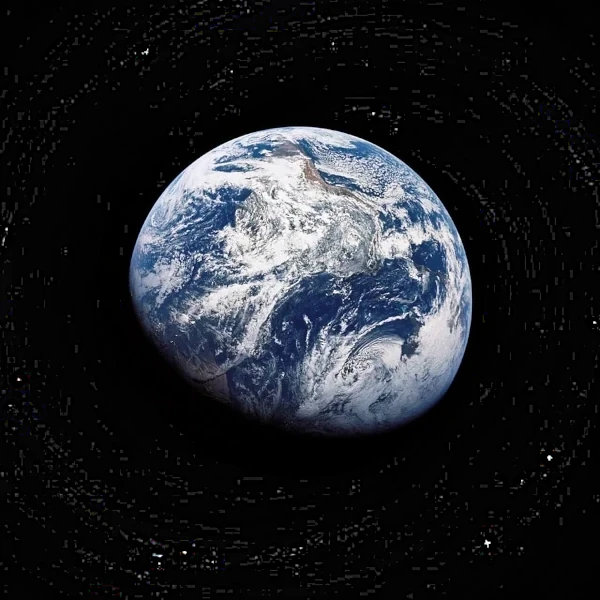
Every year, Earth completes its orbital ballet around the Sun, tracing in our imagination a perfect, immutable ellipse. Yet, this image is an illusion. In reality, our planet never returns to exactly the same point in space. It dances, yes, but on an invisible spiral, a trajectory that stretches through the cosmos like a celestial Ariadne's thread.
Earth's rotation on its axis and its revolution around the Sun combine to create a helical trajectory as Earth follows its orbit.
The Sun, with its entire planetary entourage, moves through the Milky Way at nearly 828,000 km/h. Thus, Earth's trajectory around the Sun becomes a helix advancing simultaneously through the galaxy, creating the famous cosmic spiral. In 225 million years (galactic year: the time it takes the Sun to complete one orbit around the center of the Milky Way), Earth will have traced a spiral 500 million light-years long.
N.B.:
The spiral is the natural consequence of all Earth's and the Sun's movements: rotation, revolution, precession, nutation, and galactic translation. Thus, as Earth completes its annual revolution, the entire solar system moves, drawing a helix in spacetime, a three-dimensional spiral, a curve that never closes.
Earth performs a rotation on its axis in about 24 hours, creating the day-night cycle. Its revolution around the Sun lasts 365.25 days, describing an elliptical orbit in accordance with Kepler's laws. The average revolution speed is \(\approx 29.78 \ \text{km/s}\).
Earth's axis is not fixed: it undergoes a precession of the equinoxes over a cycle of \(\approx 25,800\) years and small oscillations called nutations. These movements slowly change Earth's orientation in space and influence climates over long timescales.
In addition to its internal movements, the solar system moves through the Milky Way at \(\approx 828,000 \ \text{km/h}\), following a helical path around the galactic center. The combination of rotation, revolution, and solar translation creates a cosmic spiral that Earth inevitably follows in spacetime.
| Movement | Duration / Period | Main Effect | Comment |
|---|---|---|---|
| Rotation | ~24 h | Day and night | Rotation speed ~1,670 km/h at the equator |
| Revolution | ~365.25 d | Seasons | Elliptical orbit with eccentricity ~0.0167 |
| Precession | ~25,800 years | Slow change in axis orientation | Slow shift of equinoxes and reference constellations |
| Nutation | 18.6 years | Minor axis oscillations | Maximum amplitude ~9.2 arcseconds |
| Polar shift / pole drift | Continuous / ~10 m/year | Relative shift of the rotation axis | Affects geodetic surveys and GPS maps |
| Chandler wobble | ~433 days | Small free oscillation of the axis | Cause: irregular mass distribution (oceans, atmosphere) |
| Obliquity variation | ~41,000 years | Change in axis tilt | Influences glacial and interglacial cycles (Milanković) |
| Galactic translation | ~225-250 million years (solar orbit) | Spiral in the Milky Way | Average speed ~828,000 km/h around the galactic center |
Sources: NASA – Earth Fact Sheet, Precession animation (UNL), NASA/IPAC Extragalactic Database.